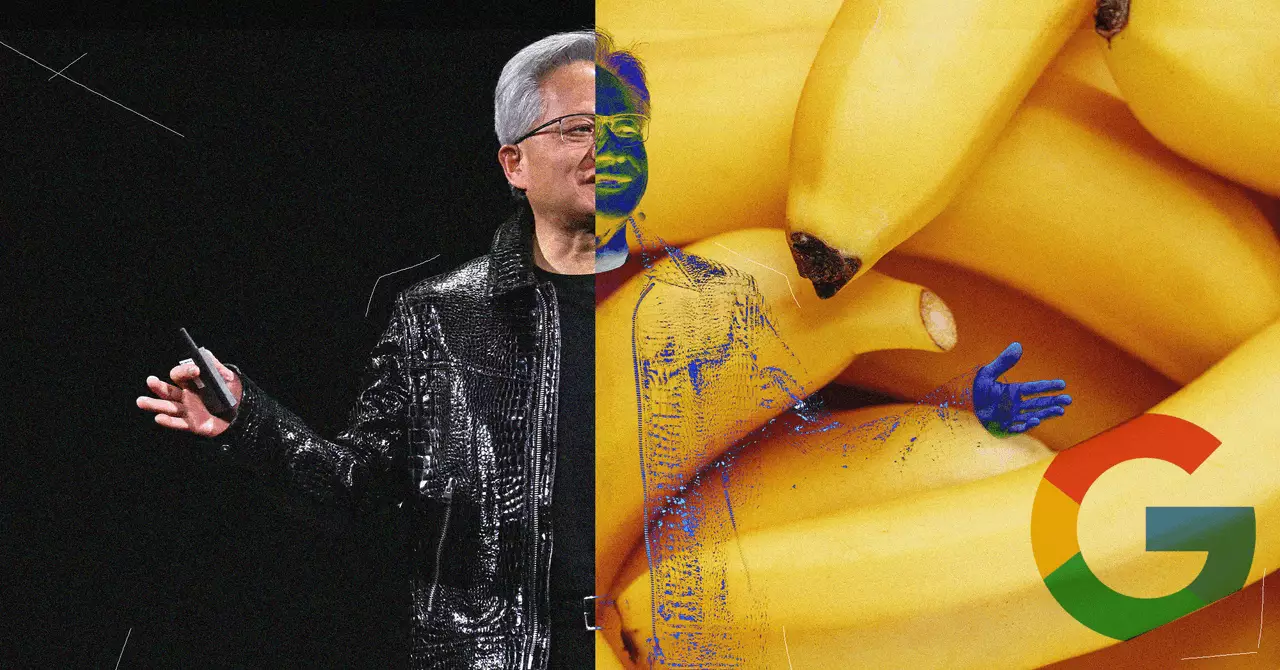In recent remarks during a London visit, Nvidia’s CEO Jensen Huang painted an exuberant vision of the future driven by artificial intelligence. With unabashed enthusiasm, he not only celebrated specific innovations but also articulated a confident conviction that AI will become a democratizing force that bridges technological divides. Huang’s playful reference to the ‘Nano Banana’—an AI image generator—serves as an emblem of the rapid advancements in AI tools, highlighting how cutting-edge technology is reshaping creative expression. This enthusiasm is more than just hype; it’s a rallying call for society to harness AI’s immense potential for collective benefit.
His infectious optimism should be approached critically, however. While it energizes the AI community, it also risks glossing over significant challenges—ethical, social, and infrastructural—that could hinder AI’s equitable integration. Nevertheless, Huang’s narrative is compelling because it underscores a fundamental truth: AI, if deployed thoughtfully and inclusively, can redefine how humans access knowledge, create, and solve problems.
Strategic Investments Signal Confidence in the UK Market
Huang’s announcement of a substantial $683 million investment in Nscale, a datacenter company, underscores Nvidia’s strategic focus on expanding infrastructure to support AI deployment. The projected revenue of over $68 billion from this partnership isn’t merely a business feat; it signifies a broader confidence in the UK’s technological and academic ecosystem. The UK’s historic pedigree—ranging from the Industrial Revolution to pioneering institutions like DeepMind—positions it as a fertile ground for AI innovation. Yet, this legacy also carries the weight of high expectations and a responsibility to ensure that breakthroughs translate into tangible societal benefits.
Huang advocates for the UK to recognize its own potential, emphasizing the country’s longstanding expertise and suggesting it is “too humble” about its place in AI’s future. While this confidence is admirable, it risks fostering complacency rather than encouraging sustained, inclusive development. The challenge lies in translating this confidence into policies and initiatives that promote diversity, access, and responsible AI use at all societal levels.
The Personal Side of AI: Huang’s Vision and Use Cases
What makes Huang’s narrative particularly compelling is his candid sharing of how AI has permeated his personal and professional life. He describes AI agents as “thinking partners” that enhance productivity and creativity, a perspective that humanizes the technology and makes its benefits tangible. His use of multiple AI tools—Gemini for technical tasks, Grok for artistic endeavors, Perplexity for research, and ChatGPT for everyday functions—illustrates a nuanced understanding of AI’s versatility.
Huang’s approach also hints at a broader trend: the shift towards personalized AI companions that adapt to specific needs, be it technical proficiency, creative inspiration, or rapid information retrieval. This democratization of AI tools, he argues, must extend universally—anyone left behind on the advancement of electricity or the internet should not be left out of AI’s benefits. His stance is clear: AI has the power to reduce societal gaps, provided governance and access are prioritized.
Challenging the Hype: From Enthusiasm to Reality
While Huang’s enthusiasm is contagious, it’s essential to critically evaluate whether this optimism aligns with the wider ecosystem’s realities. The narrative often glamorizes AI’s potential, but substantial obstacles remain. Issues of bias, transparency, data security, and the risk of misuse threaten to undermine the societal good Huang envisions. Moreover, the rapid growth of tools like Nano Banana, which can generate highly realistic images, raises ethical questions about misinformation, privacy, and consent.
Huang’s emphasis on democratization is a necessary step, but achieving it demands a deliberate, multi-faceted approach. Infrastructure investments, regulatory frameworks, ethical guidelines, and educational initiatives must evolve hand-in-hand with technological advancements. Without these measures, the promise of AI as a unifier risks devolving into new forms of inequality or misuse.
Huang’s passionate rhetoric offers both inspiration and caution. It reminds us that AI’s transformative power is real and within reach, capable of addressing long-standing societal challenges. Yet, it also challenges innovators, policymakers, and society at large to ensure that this power is wielded responsibly. Embracing AI’s potential requires more than technological breakthroughs; it calls for a collective conscious effort to promote inclusivity, transparency, and ethical standards.
In the end, Huang’s narrative isn’t just about celebrating technological innovation; it’s a plea to recognize AI as a societal cornerstone—one that must be built thoughtfully, equitably, and sustainably for generations to come. If harnessed correctly, AI can truly become a force for good, shaping a future where opportunity and progress are universally accessible.

